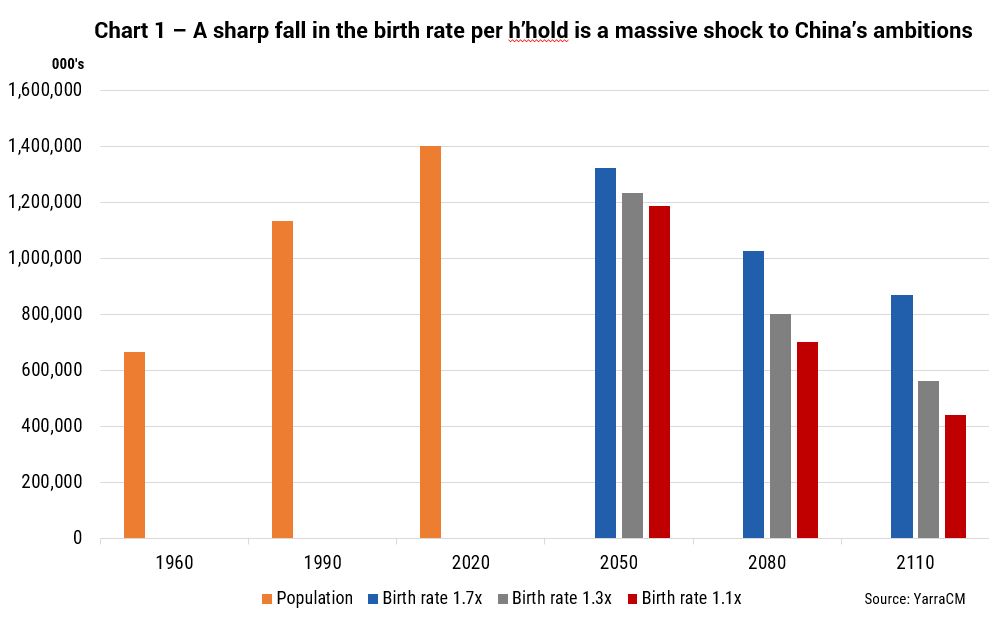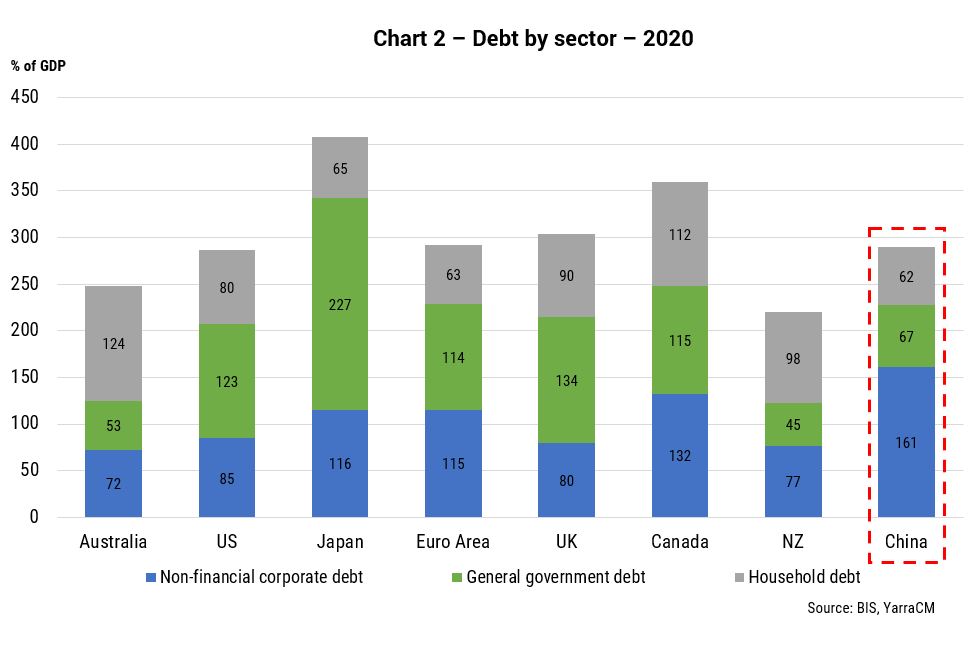Few would dispute that one of the clear surprises of the September quarter was China’s heavy-handed approach to listed education, childcare and property developers. The real question is what prompted such an aggressive response in such a short timeframe.
To be clear, the first half of 2021 saw some incremental tightening in credit provision in China, and by the second quarter it was clear that economic momentum was already deteriorating. Xi had already riled markets, instructing Chinese IT firms that the data that they collect is not owned by them but by the State, with once prominent Chinese billionaires and celebrities retreating from view. All the while analysts had been debating for months exactly what Xi means by “dual circulation” and “common prosperity”, adding a degree of caution to Chinese related exposures.
So it was curious timing for Xi to implement surprise reforms that decimated the business models of education and childcare providers. Moreover, the problems of Evergrande and its enormous liabilities could have been resolved via government intervention had the government chosen to do so in a timely manner. Instead, the administration has allowed concerns to build that Evergrande is not the only developer at risk and, predictably, concerns have now spread to other large developers. The bonds of several Chinese property firms are now under severe pressure.
As the world’s eyes scour for which other large developers are at risk, attention is fast turning to the impact a swathe of defaults would have on the Chinese banking system, and the outlook for the 30% of China’s economy that is dedicated to building homes. Again, the question is why have China’s policy makers not intervened sooner and sought to stabilise sentiment? What could possibly be more important?
Whilst it’s impossible to be sure, the most plausible explanation is a single number came to light that terrified Chinese authorities. For a centrally planned economy, it’s difficult to overstate the importance of obtaining the data from the most recent census. It is after all a fully enumerated count conducted on each household collecting information from everything from income, employment, location, and the structure of the family unit.
In recent days snippets from the recent Census in China have been released. For background, most serious institutions who model demographic trends, including in China, have assumed that the fertility rate in China would hold around 1.7 children per household. That’s below replacement rate, so China was assumed to have its near 1.45 billion population shrink by approximately 200 million over the next 40 years.
That’s a big challenge with few precedents, particularly for an economy yet to have reached ‘developed’ economy status. Nevertheless, China has been aware of the problem for some time, and has been focussed on strategies to mitigate a gradual shrinking of its population.
What would have been shocking was the news from the census that the fertility rate was not 1.7 children per household, it was just 1.3. To gauge why that’s important, if we put that figure into a population simulator, China’s population will decline by over 400 million over the next 40 years, 600 million over the next 60 years and more than halve by 2090!
Moreover, the structure of the population would become dangerously unbalanced, heavily skewed to older people. With the risk of sounding too melodramatic – that one number changes everything. Assumptions around growth ambitions, fiscal stability, social stability all need to be reassessed. For countries like Australia, what does that mean for future resource demand?
Moreover, there is no way of knowing whether the fertility rate finding was merely an aberration or, more worryingly, just part of an ongoing trend. What if the fertility rate continues to fall and doesn’t stabilise until around 1.1 children per household? As Chart 1 shows, China’s population would plummet by 15% by 2050 and halve by 2080. Under that scenario, within the lifetime of today’s Millennials China could go from being the world’s greatest emerging power to an economy with severe growth challenges via a rapidly shrinking population.
In many ways it helps explain a lot of recent policy announcements. Having success at changing birth rates is notoriously difficult. Falling birth rates have long been correlated with rising living standards, workforce engagement, access to contraception etc.
But in China’s case the cost of raising a child has been exacerbated by demand that has been fuelled by the belief that private childcare and education is not a luxury, but is rather a necessity for their children’s success. Unlike Western economies, rising house prices are seen as a barrier to improving the fertility rate, presumably because higher prices restrict the number of bedrooms a typical family can afford. From that viewpoint, the census data likely provided a catalyst for urgent action.
Given the scope of the problem, the announcements made during Q3 in China shouldn’t be seen as the end of the matter. Indeed, the policy changes are likely just getting started. Economic growth is just population growth plus productivity growth. Given the census in China is only conducted once every ten years, there is no do-over next year to see whether the low birth rate was an aberration or whether it has stabilised. If the pressure on China’s youth was already high to unleash a productivity leap in order to counteract projected population decline projections, then that pressure will now be intense.
The question is now whether China’s investments in future facing technology (e.g. AI and supercomputing) will be able to generate sufficient productivity growth to alleviate a rapidly aging population. Perhaps, but the Western experience is that the productivity enhancements have come in tandem with the tailwind of strong population growth and globalisation. China has already enjoyed a remarkable period of economic growth fuelled by the combination of: (i) previously favourable demographics, (ii) the transfer of technology from developed nations, (iii) dramatic engagement in global trade aided by the ascension to the WTO; and (iv) rapid debt accumulation.
China has been rightly proud of its economic development and is strident in its belief that it has a superior economic growth model. But the drivers of that growth model are all in flux. You can only lever up your economy once, and China’s debt is now high by developing nation standards and is already on par with many Western nations (refer Chart 2).
China’s “dual circulation” policy is in part a retreat to a more self-sufficient model rather than global trade focussed model. China’s more adversarial approach to the West will invariably also seize up the flow of capital, ideas and technology. Yet of all these challenges, the biggest may well be whether its need to alter the path of its post-census projected population decline is now also in direct conflict with the disproportionately high contribution of property to its economic growth model.
And that is worth thinking deeply about.


0 Comments